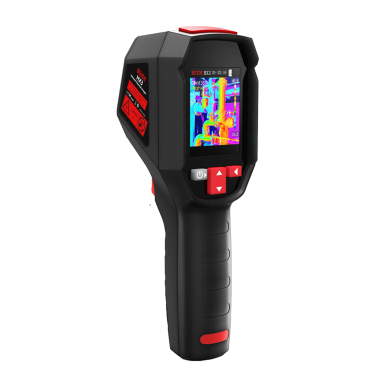Infrared Thermometer: A Comprehensive Guide to Non-Contact Temperature Measurement

# Infrared Thermometer: A Comprehensive Guide to Non-Contact Temperature Measurement
## Introduction to Infrared Thermometers
Infrared thermometers, also known as non-contact thermometers or laser thermometers, have revolutionized temperature measurement across various industries. These devices measure temperature by detecting the infrared energy emitted by objects, providing quick and accurate readings without physical contact.
## How Infrared Thermometers Work
Infrared thermometers operate on the principle that all objects emit infrared radiation as a function of their temperature. The device consists of:
- An optical system to collect infrared radiation
- A detector to convert radiation into an electrical signal
- Signal processing electronics
- A display unit
The thermometer measures the infrared energy coming from a specific spot on the target object and converts it into a temperature reading displayed in degrees Celsius or Fahrenheit.
## Key Features of Modern Infrared Thermometers
Distance-to-Spot Ratio
This important specification indicates how far you can be from the target while still getting an accurate reading. A higher ratio means you can measure smaller targets from farther away.
Emissivity Adjustment
Advanced models allow users to adjust for different surface materials, as some surfaces emit infrared radiation more efficiently than others.
Laser Targeting
Most infrared thermometers use lasers to help aim at the specific spot being measured, though the laser doesn’t affect the temperature reading.
## Applications of Infrared Thermometers
Medical Use
Keyword: infrared thermometer
Infrared thermometers have become essential in healthcare, especially for measuring body temperature without contact – crucial during infectious disease outbreaks.
Industrial Maintenance
Technicians use them to detect overheating equipment, electrical components, and mechanical systems before failures occur.
Food Safety
Restaurants and food processing plants rely on infrared thermometers to check food temperatures quickly without contamination risk.
HVAC Systems
HVAC professionals use these devices to measure duct temperatures, check refrigerant lines, and diagnose system performance.
## Advantages of Infrared Thermometers
- Non-contact measurement reduces contamination risk
- Fast readings (typically less than 1 second)
- Ability to measure moving objects or hazardous materials
- Measure extremely hot surfaces safely
- Portable and easy to use
## Limitations to Consider
While infrared thermometers offer many benefits, they have some limitations:
- Cannot measure internal temperatures
- Affected by dust, smoke, or steam in the measurement path
- Reflective surfaces may give inaccurate readings
- Require clear line of sight to the target
## Choosing the Right Infrared Thermometer
Determine Your Needs
Consider the temperature range you need to measure and the typical size of your targets.
Check Accuracy Specifications
Look for devices with ±1°C or better accuracy for most applications.
Consider Response Time
Faster response times (under 500ms) are better for moving targets.
Evaluate Additional Features
Some models offer data logging, adjustable emissivity, or connectivity options that might be valuable for your use case.
## Proper Use and Maintenance Tips
- Keep the lens clean for accurate readings
- Allow the thermometer to acclimate to extreme environmental temperatures
- Follow manufacturer instructions for distance-to-spot ratio
- Store in